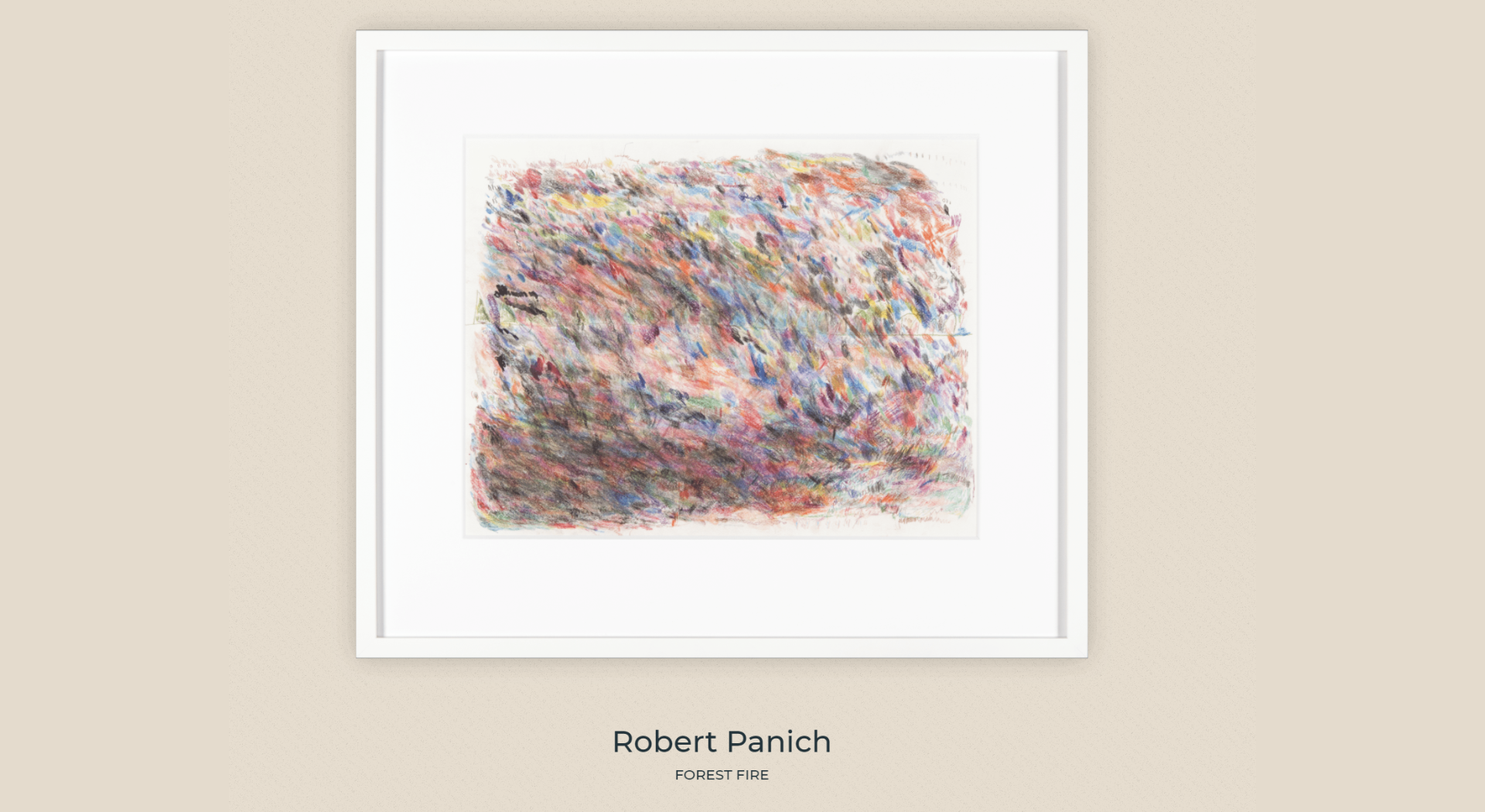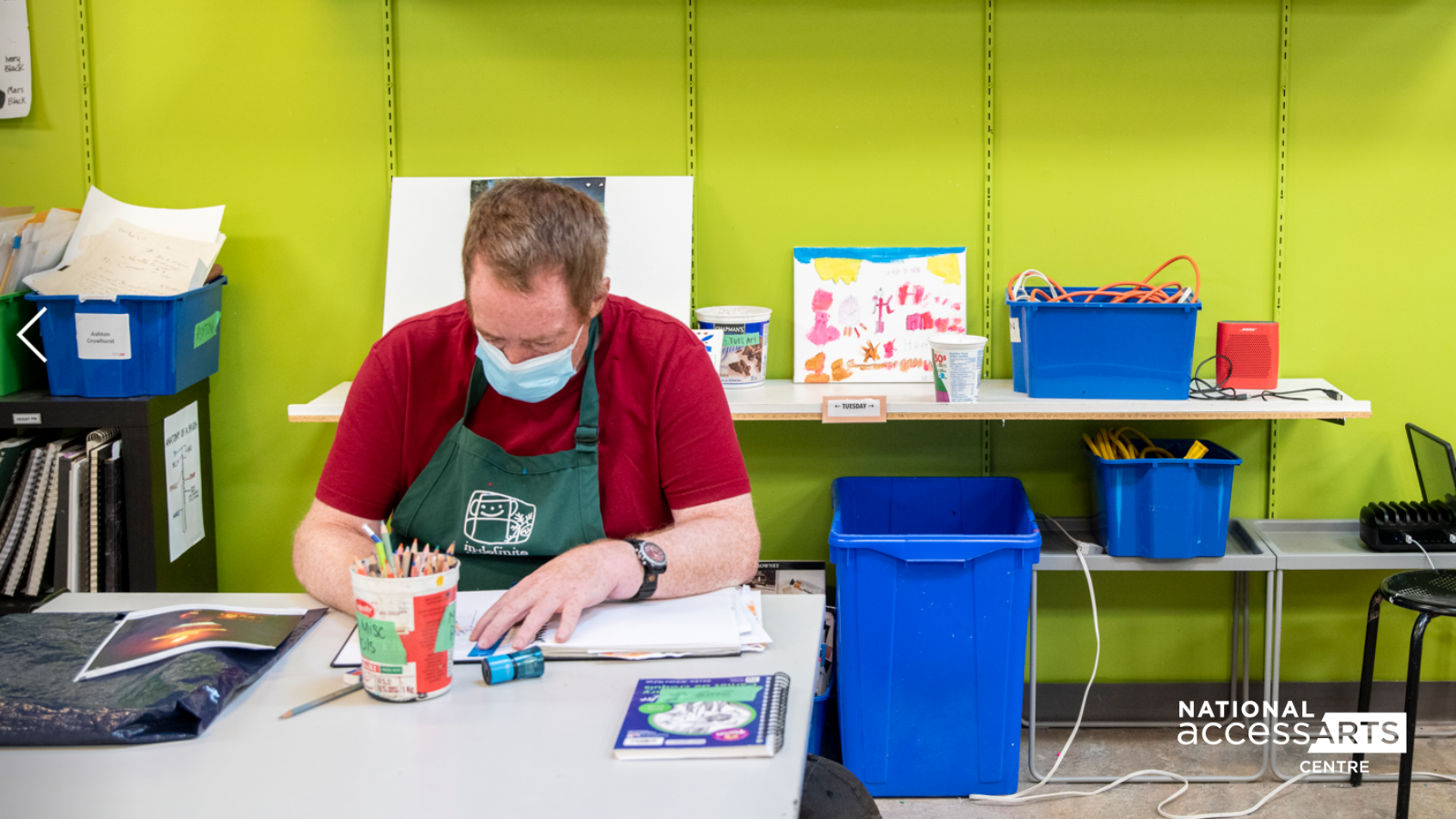Members of the NaAC Film Ensemble Shine at 28th Annual Artifact Small Format Film Festival
For three days in April, hundreds of filmmakers, film programmers, and artists from around Calgary gathered for Artifact Small Format Film Festival. It’s one of the longest-running film festivals in the city and one of the few to screen films on Super 8 mm and 16 mm film.
Thanks to a partnership with the National accessArts Centre (NaAC), the festival featured a new program called “Accessibility in Analog,” in which members of the NaAC Film Ensemble screened short films they created during the Sounds of the Silver Screen program. The films introduced new audiences to artists with disabilities, and artists to industry experts eager to work with them.
The Making of Melting Yeti
During the 8-week Sounds of the Silver Screen program, multidisciplinary artist Kathy Austin worked alongside NaAC coordinators Katie Wackett and Carlos Arteaga to create a short film and soundtrack fit for a Hollywood screen. Called “Melting Yeti,” the film uses found objects like pom poms, beads, and clay figures to tell the story:
“Deep in the Himalayas, mystical Yetis and abominable snowmen dance, smooch, and party before being overcome by avalanches and snowball fights.”
“It’s like Wes Anderson’s early cinema. It’s so good. It’s truly so good,” comments Katie.
Kathy’s first step was to set the scene. She created a diorama or small stage that represented a secluded section of Mount Everest: home for her hand-crafted Yetis. With the set complete, it was time to start shooting. Katie held the camera while Kathy manipulated the set to advance the story.
Next, she worked on the soundtrack using a combination of original recordings and audio clips from a Yeti sound library she and Katie found online. Finally, she used a digital version of the Super 8 mm footage to edit the film. As a final touch, Kathy wrote the audio description—a process she found both challenging and gratifying.
Usually delivered via a secondary audio track, audio description gives blind and visually-impaired audiences a verbal depiction of key visual elements in a film, television show, or theatre production. In recent years, there’s been a significant shift in the way it’s developed.
“The thought is, instead of packing the audio description on something that’s already made, wouldn’t it be great if the audio description was part of the creation? Now, audio describers use a number of different methods to tell a story, like poetry and sound art. It’s kind of revolutionary.
Kathy Austin
Many sighted people struggle with traditional audio description because it can be distracting if you don’t need it. But when it becomes part of the story, it can deepen the experience, Kathy says. The audiences at Artifact loved it.
Monster Movie
Why Yetis? Because Yetis, like people with disabilities, are misunderstood creatures, says Kathy:
“When I see monster movies, for me, the monster is the protagonist. But in most monster movies, the humans want to kill the monster. Essentially, I am a monster and I think most people with disabilities feel that way”
Much of the fear and bigotry towards people with disabilities comes from ignorance, Kathy adds. “People in the mainstream have a fear of people on the margin because they’re different. Different always relates to the unknown, and most humans have a fear of the unknown. The more able-bodied people learn about people with disabilities, the less they are going to be afraid of them,” she says.
The first step: be open to learning. For some, that means seeking out opportunities to engage with disability art. “If you ask someone who their favourite disabled filmmaker is, they probably can’t think of anyone,” says Katie. “Disabled voices and disabled perspectives are relevant and necessary in art, but they’re missing from mainstream media.”
So, broaden your horizons, suggests Kathy, and experience art made by people with disabilities.
Double Exposure
Experiencing disability art is just one part of the equation. There also needs to be opportunity for artists with disabilities to participate in art-making practices.
Many of the elements of filmmaking are accessible for people with disabilities, says Katie. Just entering a cinema can be a challenge for wheelchair users, she adds. That’s why the NaAC is advocating to make events, spaces, and film sheets more inclusive. Because what happens in the studio and on the screen matters.
The world needs more women filmmakers and more filmmakers with disabilities, agrees Kathy:
“Their stories need to be told. The films don’t need to be about disability, but a person with a disability has a different life experience and a different lens that they’re experiencing the world through, and people need to learn about that.”
The responsibility is on filmmakers and film programmers to make their programming more welcoming and inclusive for people with disabilities. It can be scary, but the best thing to do is start, says Katie. “It’s better to try and make a mistake and learn from it than do nothing at all,” she says.
She recalls the Sounds of the Silver Screen program. The artists weren’t interested in conventional ways of making a film like storyboarding or writing a script. Each one had a unique way of working, so we customized the process to meet their individual needs, says Katie. Doing so allowed several of the artists to fall in love with different aspects of filmmaking, finding new mediums, methods, and inspirations. “One of the artists really, really loved making sound effects. Another loved the costuming. And another didn’t want to do anything other than act,” says Katie. “It was a huge learning process for all of us!”



